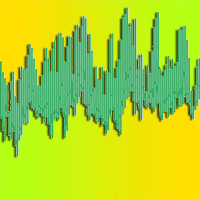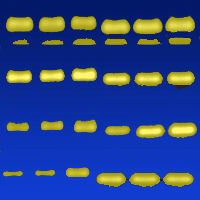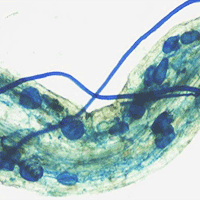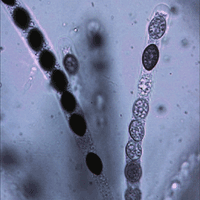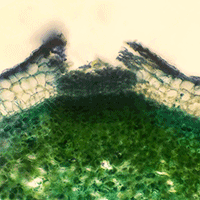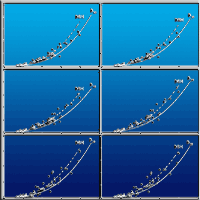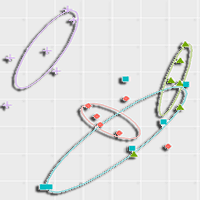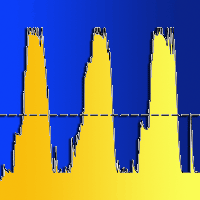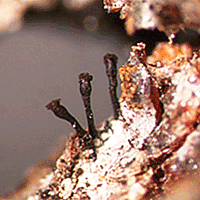
Detection and quantification of the air inoculum of Caliciopsis pinea in a plantation of Pinus radiata in Italy
Leticia Botella (1) , Aneta Bačová (1), Milon Dvorák (2), Tomáš Kudláček (1), Alessia L Pepori (3), Alberto Santini (3), Luisa Ghelardini (3), Nicola Luchi (3)
iForest - Biogeosciences and Forestry, Volume 12, Issue 2, Pages 193-198 (2019)
doi: https://doi.org/10.3832/ifor2866-012
Published: Apr 10, 2019 - Copyright © 2019 SISEF
Short Communications
Abstract
Caliciopsis pinea has been historically described as a secondary pathogen of pines. However, it has recently been associated with severe damages on Pinus radiata in Italy. Our study focused on the description of the seasonal spore dispersal of C. pinea and its relation to meteorological conditions (temperature, leaf wetness, relative humidity and precipitations). For this experiment one infected P. radiata plantation was sampled in Tuscany (Italy). A rotating arm spore trap together with a weather station were installed to sample the aerospora for 24 h every week from May to November 2016. Exposed tapes from spore traps were directly analyzed after DNA extraction by qPCR using specific primers and TaqMan MGB probe. The study shows an irregular occurrence of the inoculum of C. pinea throughout the whole sampling period with peak levels in mid-June and early August. The statistical analysis of the DNA and climatic data clearly show the strong influence of precipitation on the spore production of this pathogen. Furthermore, the very low detection limit of the qPCR experiment shows the efficacy and suitability of rotating arm spore traps for early detection of this pathogen.
Keywords
Authors’ Info
Authors’ address
Aneta Bačová
Tomáš Kudláček
Phytophthora Research Centre, Department of Forest Protection and Wildlife Management, Faculty of Forestry and Wood Technology, Mendel University in Brno, Zemedelská 1, 613 00 Brno (Czech Republic)
Department of Forest Protection and Wildlife Management, Faculty of Forestry and Wood Technology, Mendel University in Brno, Zemedelská 1, 613 00 Brno (Czech Republic)
Alberto Santini 0000-0002-7955-9207
Luisa Ghelardini 0000-0002-3180-4226
Nicola Luchi 0000-0003-3119-7574
Institute for Sustainable Plant Protection, National Research Council (IPSP-CNR), v. Madonna del Piano 10, 50019 Sesto Fiorentino, Firenze (Italy)
Corresponding author
Paper Info
Citation
Botella L, Bačová A, Dvorák M, Kudláček T, Pepori AL, Santini A, Ghelardini L, Luchi N (2019). Detection and quantification of the air inoculum of Caliciopsis pinea in a plantation of Pinus radiata in Italy. iForest 12: 193-198. - doi: 10.3832/ifor2866-012
Academic Editor
Claudia Cocozza
Paper history
Received: May 24, 2018
Accepted: Jan 21, 2019
First online: Apr 10, 2019
Publication Date: Apr 30, 2019
Publication Time: 2.63 months
Copyright Information
© SISEF - The Italian Society of Silviculture and Forest Ecology 2019
Open Access
This article is distributed under the terms of the Creative Commons Attribution-Non Commercial 4.0 International (https://creativecommons.org/licenses/by-nc/4.0/), which permits unrestricted use, distribution, and reproduction in any medium, provided you give appropriate credit to the original author(s) and the source, provide a link to the Creative Commons license, and indicate if changes were made.
Web Metrics
Breakdown by View Type
Article Usage
Total Article Views: 44410
(from publication date up to now)
Breakdown by View Type
HTML Page Views: 37313
Abstract Page Views: 3462
PDF Downloads: 2808
Citation/Reference Downloads: 6
XML Downloads: 821
Web Metrics
Days since publication: 2447
Overall contacts: 44410
Avg. contacts per week: 127.04
Citation Metrics
Article Citations
Article citations are based on data periodically collected from the Clarivate Web of Science web site
(last update: Mar 2025)
Total number of cites (since 2019): 5
Average cites per year: 0.71
Publication Metrics
by Dimensions ©
Articles citing this article
List of the papers citing this article based on CrossRef Cited-by.
References
Indagini sui disseccamenti del Pinus radiata in Toscana causati da Caliciopsis pinea [Dieback of Pinus radiata in Tuscany caused by Caliciopsis pinea]. Degree in Forestry and Environmental Science, University of Florence, Italy, pp. 34. [in Italian]
Gscholar
Caliciopsis pinea Peck parassita di Pinus pinaster e Pinus insignis [Caliciopsis pinea Peck parasite of Pinus pinaster and Pinus insignis]. Phytopathologia Mediterranea 17: 101-104. [in Italian]
Gscholar
Pinus nigra var. austriaca, nuovo ospite di Caliciopsis pinea Peck [Pinus nigra var. austriaca, a new host for Caliciopsis pinea Peck]. Informatore Fitopatologico 5: 19-21. [in Italian]
Gscholar
Occurrence of Caliciopsis pinea Peck on pine: interactions with other fungal pathogens. In: Proceedings of the IUFRO meeting WP 7.02.02 “Foliage, shoot and stem diseases of forest trees”. Brno (Czech Republic) 20-25 May 2013. Mendel University. Brno, Czech Republic pp. 33.
Gscholar
Il pino insigne nell’arboricoltura da legno: analisi di interventi realizzati nell’Italia meridionale [Radiata pine in wood arboriculture: analysis of interventions carried out in southern Italy]. Italia Forestale e Montana 3: 217-231. [in Italian]
Gscholar
Field inoculations of Caliciopsis pinea and Diplodia scrobiculata on eastern white pine. In: Proceedings of the “Southwide Forest Disease Workshop”. Greenville (SC, USA) 29 June-2 July 2009. USDA Forest Service, Forest Health and Protection, Asheville, NC, USA, pp. 13.
Gscholar
Extensions of the host ranges and distribution of Caliciopsis species on western conifers. Plant Disease Reporter 48: 677-678.
Gscholar
Rough bark diseases caused by Caliciopsis spp. In: Proceedings of the IUFRO meeting WP 7.02.02 “Foliage, shoot and stem diseases of forest trees”. Corvallis (Oregon, USA) 13-19 June 2004, pp. 36.
Gscholar
Pinus radiata: a narrow endemic from North America takes on the world. In: “Ecology and Biogeography of Pinus” (Richardson DM ed). Cambridge University Press, Cambridge, UK, pp. 432-449.
Gscholar
Caliciopsis canker: a damaging disease on plantations in Italy. In: Proceedings of the Joint IUFRO 7.02.02 “Foliage, shoot and stem diseases of forest trees” and 7.03.04 “Diseases and insects in forest nurseries” meetings. Uppsala (Sweden) 7-12 June 2015. Swedish University of Agricultural Sciences, Uppsala, Sweden, pp. 21.
Gscholar
Pinus radiata D. Don, Pinaceae, Pine Family. In: “Silvics of North America, vol. 1. Conifers” (Burns RM, Honkala B eds). Agriculture Handbook 654, USDA Forest Service, Washington, Dc, USA, pp. 433-441.
Gscholar
The rotorod sampler. Second Semi-Annual Report No. CML 186, Aerosol Laboratory, Stanford University, CA, USA.
Gscholar
Invasive plant species of the world: a reference guide to environmental weeds. CAB International, Wallingford, UK, pp. 548.
Gscholar

